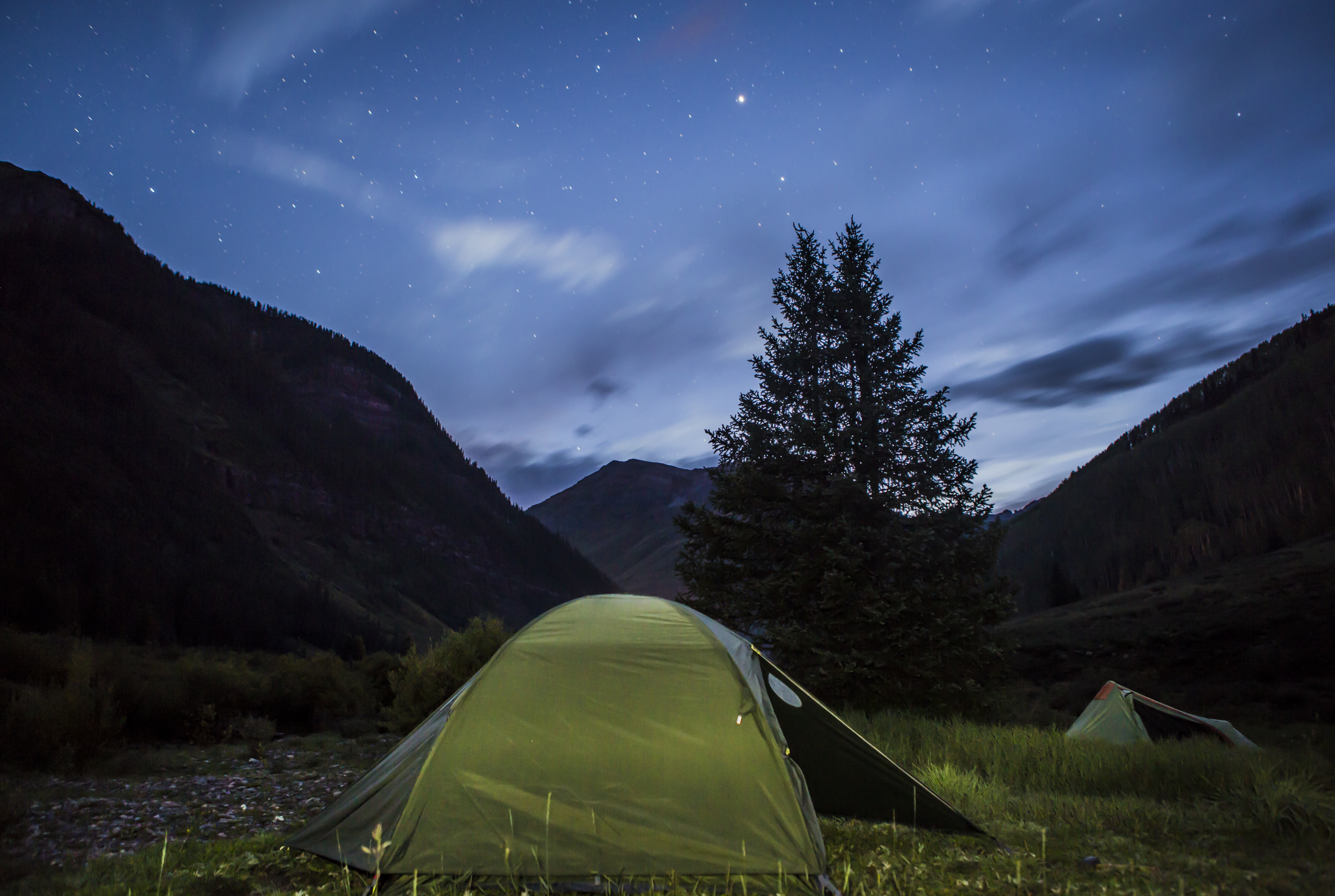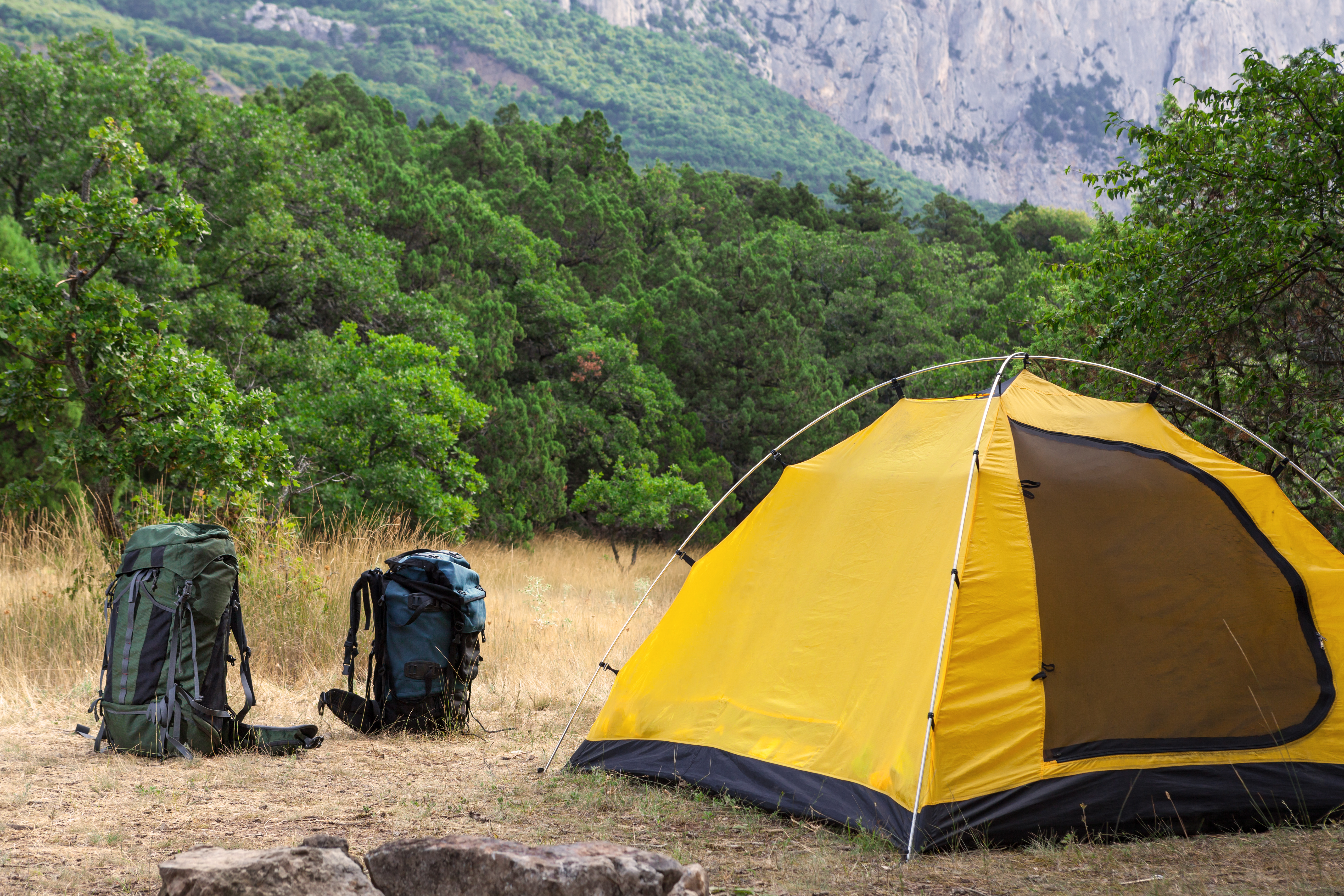
The Big Agnes Copper Spur HV UL2 is a mid-range backpacking tent and one of the best you can buy. It has a great space to weight ratio, it is waterproof, spacious and easy to set up. It isn’t the most affordable option on the market but it is reliable and a great investment on the long term.

The MSR Hubba Hubba NX 2 tent is one of the best tents to take with you when backpacking. It is lightweight, compact and easy to pack, it has a good ventilation and it is roomy enough for two people. It is a 3-season tent and while it’s not among the most inexpensive tents you can find, it won’t break the bank either.

The Kelty Salida 2 is a budget-friendly backpacking tent, with a 2-person capacity. It is a 3-season tent and it is easy to set up. It doesn’t have the best ventilation, especially when you use it with the rain fly on and it has a single door, but given its reasonable price, we think the Salida 2 is a good value for the money.

The Black Diamond Firtslight tent is a bit of a controversial product. You have to really know how and when to use it to benefit from it at full capacity. While it may have been described as a 4 season/2 person tent, if you really want to get the best out of the Firstlight, you should use it for a single person and in dry conditions or snow and wind, but not heavy rain. It is a really good deal for alpine activities/use or freezing temperatures and while it may fall a bit short in comfort, it really shines when it comes to its ultralight weight. It is also really easy/quick to set up.

Regardless of how you look at it, the Hilleberg Niak is a premium tent in all its aspects. It is the most beautifully and flawlessly built tent we’ve reviewed so far. The high quality materials and design make it one of the most durable tents on the market. It also behaves superbly in heavy rain, strong winds and bad weather in general. No amount of water can penetrate its Kerlon 1000, completely waterproof nylon. The only ‘drawback’ we could really find with the Niak was its steep price, but we can guarantee you’ll get your money’s worth.

The Nemo Dagger is a 3 season tent but it can also cope with light snow and be used all year long, depending on the climate. The best thing about this tent is its generous space and high comfort level, especially due to its two doors and two vestibules design. The fact that it’s also very durable, in spite of its light construction and that it’s water and wind resistant, make it a premium choice for any outdoor enthusiast.

The Nemo Kunai tent is a great choice for people into mountaineering. It is light, yet strong and durable, it is a 4-seeason tent that behaves exemplary during extreme weather conditions and it is easy to install and pack.

The Zpacks Duplex is a 3 season, 2-person tarp tent, made of a really premium material (DCF, a.k.a. Cuben Fiber). It is a bit expensive and it doesn’t come with included stakes, but you don’t need tent poles to set it up, you can use your trekking poles instead. The Duplex is insanely compact and light, copes great with rain and it offers top-notch insect protection.

The Tiger Wall UL2 from Big Agnes is among the lightest 2-person backpacking you can find. It isn’t the roomiest tent out there, but it comes with 2 doors and vestibules, it is fully waterproof and most importantly, it is ultralight.

The Quarter Dome 2 is an upgrade from the initial Quarter Dome tent model. It comes with several improvements, in terms of space, comfort and durability. It is a 2 person/3 season backpacking tent, roomy and with plenty of storage space, it is water proof and the ventilation system is extremely well conceived.
Last updated July 5, 2025

If you are a nature lover, passionate about the outdoors, backpacking, hiking or what have you, you know how important it is to invest some time and money in building your perfect ‘backpacking kit’. Nature can be beautiful but unmerciful at the same time and you have to be properly equipped if you want to ensure your adventures outside will be something you want to remember. In addition to proper clothing, a reliable backpack, lighting gear and sleeping bag, you might also need a well-chosen tent, if you choose to sleep outside.
Choosing a tent that meets your needs can be a daunting task, if you don’t know your way around this subject.
Here are some basic things you should know about tents, before starting to browse for one:

As you’ve probably figured out by now, there are a lot of choices when it comes to tents. They come in so many shapes, types, fabrics and so on, that you have to really do your homework before spending your money on something you might regret. One thing is clear though: purchasing a tent has to be seen as a long-term investment, so don’t skimp on essential aspects or features, because you’ll end up regretting and spending more on the long run.
You can buy a tent for as low as $20, but it will do its job exactly like a $20 tent. So you should take these factors into consideration, when in the market for a backpacking tent:
Know exactly what are you going to use the tent for. It is very important to know the purpose you tent is supposed to serve, before making a decision: are you going to use it alone or with someone else and if so, exactly how many people will sleep in it? Where are you going to camp and set it up? When exactly throughout the year are you going to use it the most? What kind of backpack do you have and so on? Tents come in so many sizes, shapes, weights and so on and it is important to buy an appropriate tent for your outdoor activities. There are also three season tents, four season tents and so on, so you have plenty of options.
Capacity/size and shape. You need to know how many people are going to sleep in the tent, because it is useless to buy a larger tent than needed, as it will be extra weight for you to carry in your backpack. Generally, it is better to have a tent that is one man bigger than the number of people who are going to sleep in it. You want it big enough for you to fit in it and put your stuff, food, backpack, etc., but you don’t want it to be unnecessarily large, because you don’t want to drag around more than you have to. There are one-person, 2 person and up to 5 person tents out there. If we were to consider the square footage of a tent, tents that have around 15-20 are recommended for just one person, while those around 35-50 are for 2 people. If you are camping more than you are backpacking, comfort should be a priority, but if your tent will spend more time packed in your backpack than on the ground, then you should consider getting a lighter, smaller and packable one. As for the shape of the tent, the most common tents for backpackers are the dome and tunnel/wedge tents. And in terms of weight, you shouldn’t go for a tent that weighs more than 3 pounds/person or even less (a good choice would be Bivy sacks, because they are light and easy to pack). You should only choose a heavier tent if you want a strong one that can cope with harsh weather conditions.
Another thing to pay attention to is how easy it is to set it up, especially if you are a beginner or you know you have to set up your tent really often and you want to be able to do it as fast as possible. There are instant tents on the market which can be set up within just 30 seconds.
The floor of the tent is really important too. Some tents come with a footprint, an extra layer that comes on the ground and is water resistant or a tarp that is placed underneath the tent. Having a tent that can protect you from rain (or maybe even snow) is an important aspect. However, if you opt for a 3-season or 4-season tent, you won’t need to worry about that, because they are designed specifically for coping with the elements.
Other factors to think about are additional features such as pockets, rainfly, a vestibule to have more space for storage (of your footwear for instance), privacy dividers, two access doors and so on.